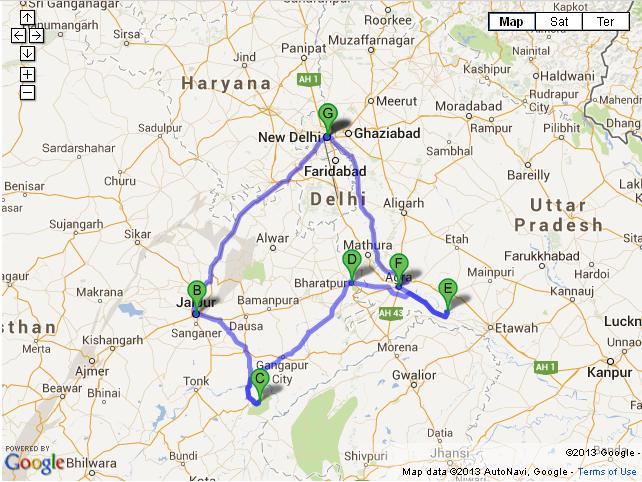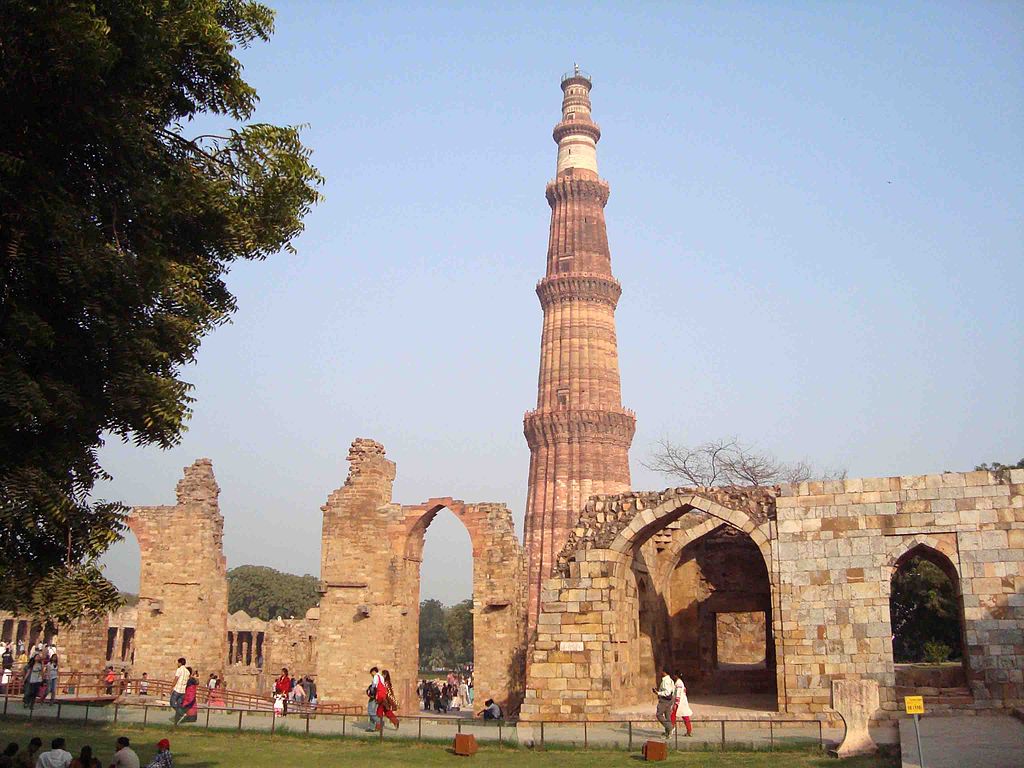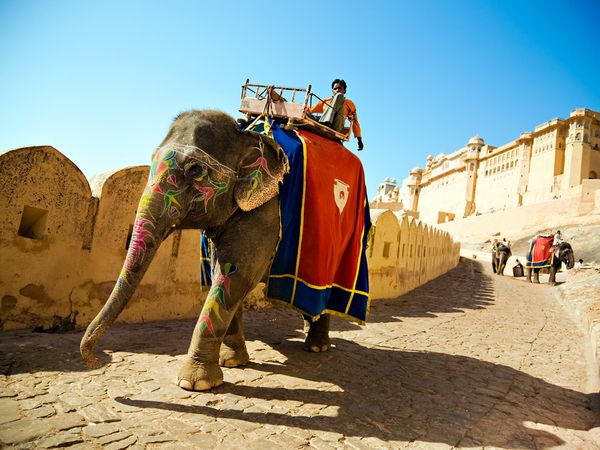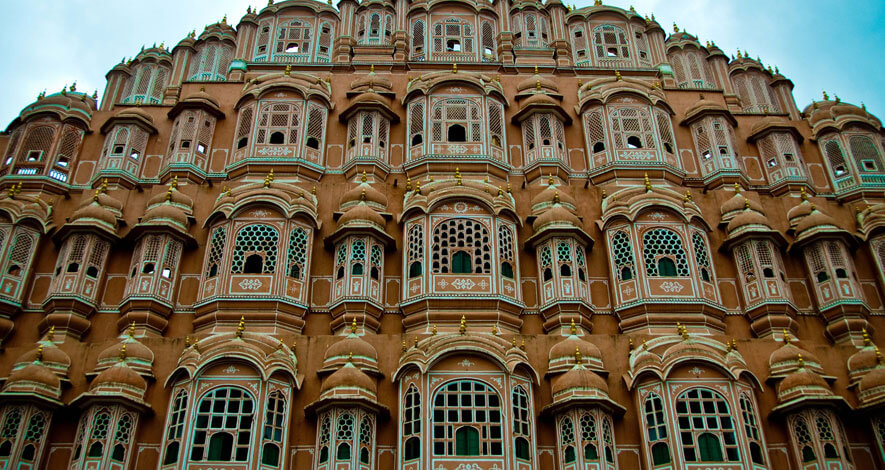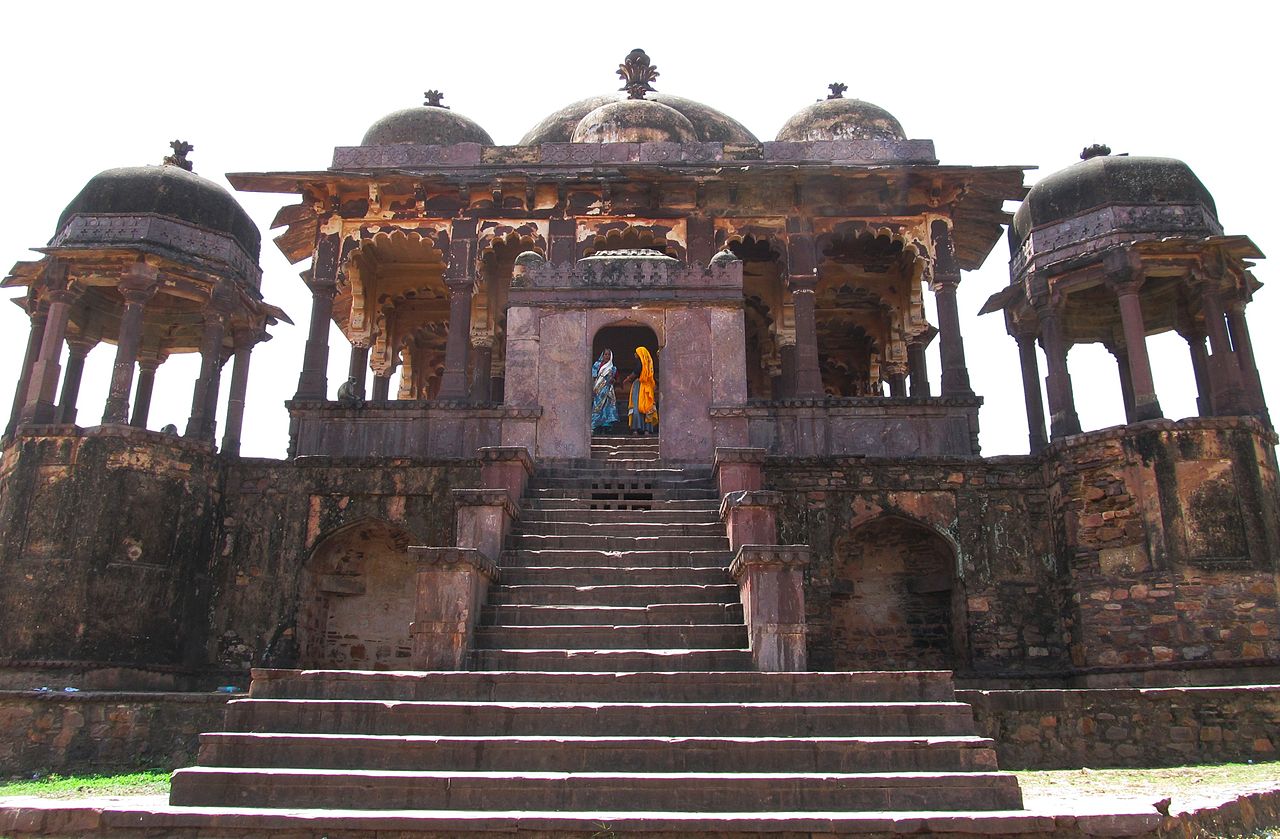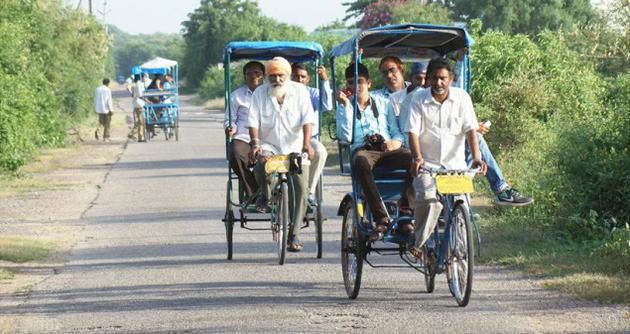Tour Overview
Embark on a captivating journey through India’s historical and cultural treasures with this meticulously planned itinerary. Begin in Delhi, where the blend of ancient and contemporary marvels awaits exploration. Witness the majestic Red Fort, Jama Masjid, and the serene Raj Ghat, a memorial to Mahatma Gandhi. Traverse the bustling streets of New Delhi, capturing iconic landmarks like India Gate and the President’s House.
Your journey continues to the captivating Pink City, Jaipur, where the opulent Amber Fort, Hawa Mahal, and City Palace beckon. An exciting wildlife adventure awaits at Ranthambore, a renowned tiger reserve, and the Bharatpur Bird Sanctuary offers a birdwatcher’s paradise. Delve into the tranquil beauty of Chambal, enjoying river safaris and temple explorations. As you arrive in Agra, marvel at the immortal Taj Mahal, a testament to love and architectural brilliance. Explore the majestic Agra Fort and delight in a captivating magic show.
Your journey concludes with a return to Delhi, leaving you with cherished memories of India’s diverse landscapes and rich history.
Duration: 12 Days/ 11 Nights
Places: Delhi > Jaipur > Ranthambhore > Bharatpur > Chambal > Agra > Delhi
Destinations Covered
Delhi: The capital city of India, Delhi, is a vibrant metropolis where history and modernity coexist harmoniously. With its seven historical cities, Delhi boasts an array of attractions. From the magnificent Red Fort, a symbol of Mughal grandeur, to the serene Raj Ghat where Mahatma Gandhi rests, the city encapsulates India’s rich past. The bustling lanes of Old Delhi lead to the Jama Masjid, an architectural marvel, while the India Gate and President’s House stand as dignified symbols of modern governance.
Jaipur: Known as the Pink City, Jaipur is a royal destination with a rich cultural heritage. The majestic Amber Fort, perched atop a hill, narrates tales of Rajput valor. The intricate Hawa Mahal, a palace of winds, showcases Rajput architecture’s finesse. City Palace, with its palatial courtyards and museums, offers insights into the royal era. The observatory Jantar Mantar, a UNESCO World Heritage Site, mesmerizes with its astronomical instruments.
Ranthambore: A wildlife enthusiast’s paradise, Ranthambore National Park is famed for its population of Bengal tigers. The dry deciduous forest, dotted with lakes, is home to various wildlife species, including deer, birds, and crocodiles. The imposing Ranthambore Fort offers panoramic views of the surroundings and a glimpse into history.
Bharatpur Bird Sanctuary: Also known as Keoladeo Ghana National Park, this UNESCO World Heritage Site is a haven for bird lovers. Over 360 bird species, including migratory birds from Siberia, create a symphony of colors. The sanctuary also hosts other wildlife like chital, Nilgai, and reptiles.
Chambal: The Chambal River offers a unique wildlife experience with boat safaris. The Chambal Safari showcases various wildlife, including crocodiles, gharials, and various bird species. The Bateshwar Temples, a complex dedicated to Lord Shiva, display intricate architecture and cultural significance.
Agra: Home to the iconic Taj Mahal, Agra is synonymous with architectural brilliance. The white marble monument of love, Taj Mahal, leaves visitors spellbound. The Agra Fort, a UNESCO World Heritage Site, showcases Mughal architecture’s splendor. Sikandra’s tomb of Emperor Akbar and its tranquil gardens offer historical insights.
This comprehensive itinerary combines historical marvels, natural beauty, and cultural experiences, providing travelers with an immersive exploration of India’s diverse landscapes and heritage.
Detailed Tour Plan
Day 01: Arrive Delhi
On arrival in India you will be greeted and escorted by our executive to your hotel. (Rooms will be available from 1200 Hrs)
In its 3000 years of existence; seven cities have risen where the present capital of India stands. Here you’ll encounter a fascinating blend of the ancient and the contemporary. Where government buildings, medieval palaces and bazaars exist beside a modern metropolis. Delhi is a city waiting to be explored.
Overnight in the Hotel
Day 02: Delhi
After breakfast enjoy the sightseeing of Delhi.
Visit the Red Fort the 17th century imposing fortress built in red sandstone is surrounded by a huge 33m high boundary wall. Inside are exquisite palaces and beautiful gardens.
Opposite the Red Fort lies Jama Masjid (Friday Mosque) made of red sandstone and white marble, completed in 1656 at a cost of one million Rupees has perfect proportions.
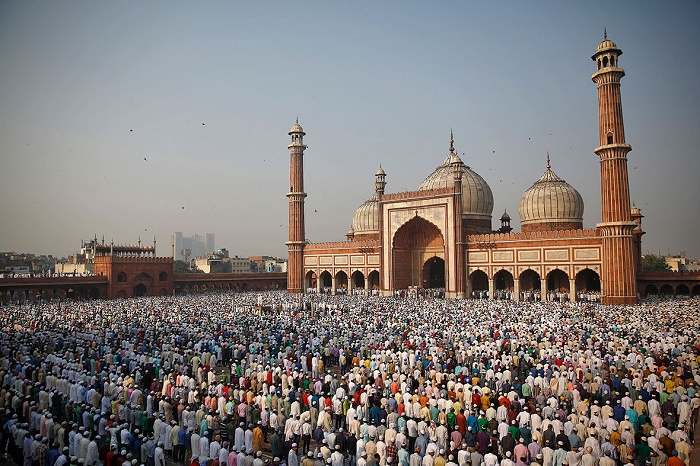 Jama Masjid is India’s largest mosque where more than 20.000 people can kneel in prayer. The interior of the prayer hall is divided into aisles by arches. The walls and floors are of marble inlay panels.
Jama Masjid is India’s largest mosque where more than 20.000 people can kneel in prayer. The interior of the prayer hall is divided into aisles by arches. The walls and floors are of marble inlay panels.
 Also visit the Raj Ghat on the banks of the river Yamuna, Mahatma Gandhi’s Memorial, where he was cremated following his assassination in January 1948. The memorial lies in the midst of landscaped gardens and made of a simple square platform of black marble inscribed with his last words “Hey Ram”. An eternal flame burns 24 hours.
Also visit the Raj Ghat on the banks of the river Yamuna, Mahatma Gandhi’s Memorial, where he was cremated following his assassination in January 1948. The memorial lies in the midst of landscaped gardens and made of a simple square platform of black marble inscribed with his last words “Hey Ram”. An eternal flame burns 24 hours.
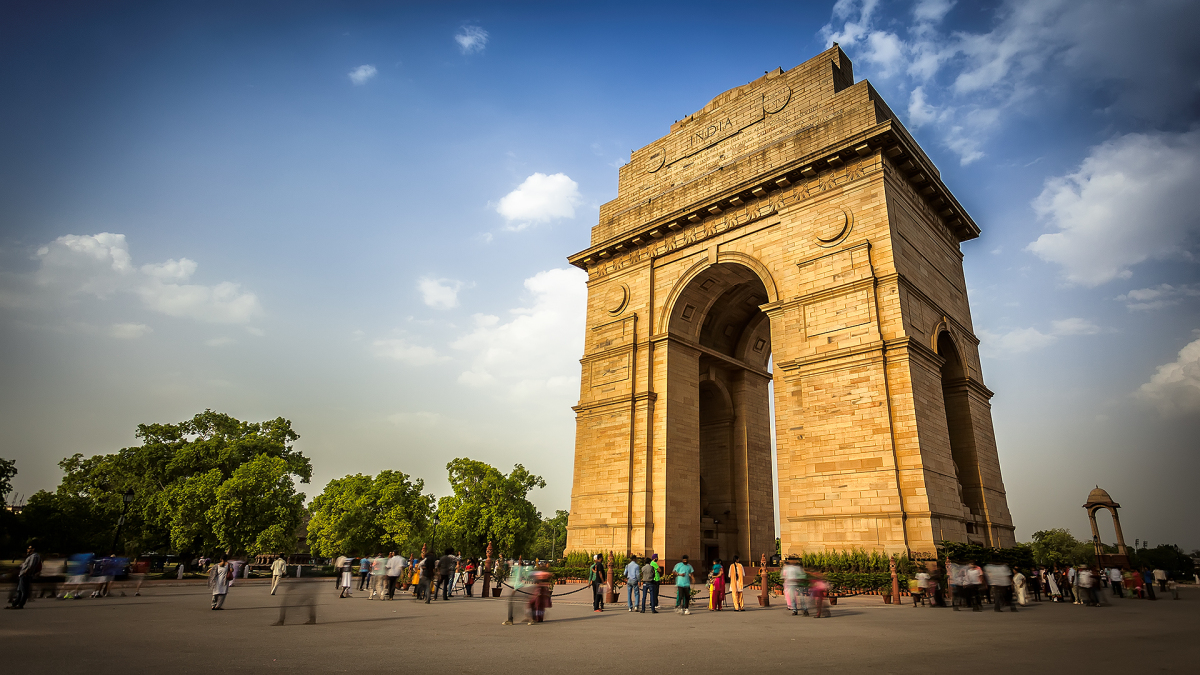 In the afternoon visit New Delhi. You will drive past India Gate Built of Bharatpur stone, commemorates the 70,000 Indian soldiers who died in the 1st world war. 13516 names of British and Indian soldiers killed in the Afghan War of 1919 are engraved on the arch and foundations. Photo stop at Rashtrapati Bhawan once the Viceroy’s residence is now the official residence of the President of India.
In the afternoon visit New Delhi. You will drive past India Gate Built of Bharatpur stone, commemorates the 70,000 Indian soldiers who died in the 1st world war. 13516 names of British and Indian soldiers killed in the Afghan War of 1919 are engraved on the arch and foundations. Photo stop at Rashtrapati Bhawan once the Viceroy’s residence is now the official residence of the President of India.
Visit the Humayun’s Tomb, built by his wife Haji Begum in the 16th. Century. An early example of Mughal architecture considered the predecessor of the Taj Mahal.
Later visit the Qutub Minar the landmark of Delhi, a huge tower of victory started in 1199 and completed in 1368. The minar is 72.5m high with a diameter at the base 14.4m and 2.7m at the top. The tower has 379 steps to the top.
Overnight in the Hotel
Day 03: Delhi / Jaipur (Approx. 258 Kms / 05 Hrs)
After breakfast drive to Jaipur.
Jaipur- the City of Victory was originally Sawai Jaipur, named after its founder Sawai Jai Singh II (1700-1743). The sunset-pink tinge of its walls, buildings, temples and emporia gave it the name Pink City, the name in which it became famous throughout the world.
On arrival in Jaipur, check in at the hotel.
Overnight in the hotel
Day 04: Jaipur
After breakfast enjoys an excursion trip which takes you to Amber Fort on Jeep / Elephants.
This city Fort is situated 130m high with the Aravalli hills all around it in a valley 11 km north of Jaipur. It was the ancient capital of the Kachhawaha Rajputs till 1037.
En route, make a photo stop at the Palace of Winds (Hawa Mahal). It is a 5 storied building from the 18th century having 953 windows and niches made so that the ladies of the Royal family.
In the afternoon visit the “Pink City” of Jaipur.
You will visit City Palace, which houses the Royal residence and museums with collections of textiles and costumes, armoury, manuscripts, paintings etc.
Also visit Royal Observatory (Jantar Mantar-1728-34) built by king astrologer Jai Singh II. The instruments are built of stone with marble facing on the important plains for measuring the harmony of the heavens. Each instrument serves a particular function and each gives an accurate reading.
Enjoy Rickshaw ride in Jaipur
Overnight in the Hotel
Day 05: Jaipur / Ranthambore (Approx. 180 Kms / 04 Hrs)
After breakfast drive to Ranthambore.
Ranthambore is one of the finest tiger reserves in India nestled in the Aravallis it is home to a variety of flora and fauna. The park along with the contiguous regions of Kela Devi and Sawai Man Singh parks forms a good biosphere along the Chambal River, which separates it from Madhya Pradesh.
On arrival, transfer to the Hotel.
Dinner & Overnight in the Hotel
Day 06: Ranthambore
Early morning enjoy game drive in the park
Return to the hotel for breakfast. Ranthambore is a dry deciduous forest replete with several lakes, rivulets and a magnificent ancient fort overlooking the park. The wildlife that one can see here are a large variety of birds, including an impressive number of waterfowl and birds of prey.
In the afternoon set out for another game drive.
Dinner & Overnight in the Hotel
Day 07: Ranthambore / Bharatpur (240 Kms – 5 ½ Hrs drive)
After breakfast, drive to Bharatpur.
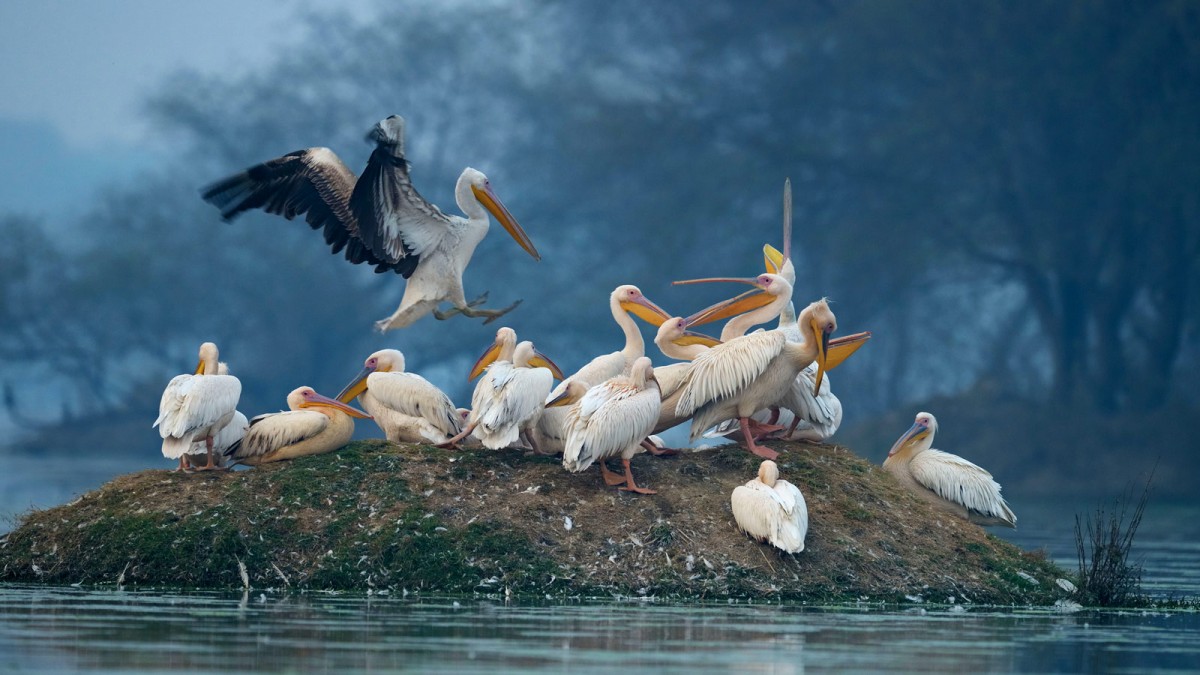 Bharatpur Bird Sanctuary or Keoladeo Ghana National Park, which was established in 1956. This 29 sq km marshland is one of the finest bird sanctuaries in the world with over 360 species of birds, out of which 117 are the local birds. Now a UNESCO World Heritage site, it used to be a part of the private shooting reserve of the Maharaja of Bharatpur.
Bharatpur Bird Sanctuary or Keoladeo Ghana National Park, which was established in 1956. This 29 sq km marshland is one of the finest bird sanctuaries in the world with over 360 species of birds, out of which 117 are the local birds. Now a UNESCO World Heritage site, it used to be a part of the private shooting reserve of the Maharaja of Bharatpur.
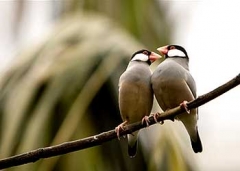 Among many bird species to be seen are egrets, storks, ducks, Chinese coots, kingfishers, spoonbills, sarus cranes and several birds of prey, including falcon, marsh harrier and eagle. Alone 80 species of ducks can be spotted here. There are also chital, Nilgai, deer, wild cats, hyenas and wild boar whilst near the entrance there are usually some very large rock pythons.
Among many bird species to be seen are egrets, storks, ducks, Chinese coots, kingfishers, spoonbills, sarus cranes and several birds of prey, including falcon, marsh harrier and eagle. Alone 80 species of ducks can be spotted here. There are also chital, Nilgai, deer, wild cats, hyenas and wild boar whilst near the entrance there are usually some very large rock pythons.
During November to February the northern hemisphere migratory birds visit the park from China, Europe and Siberia, including the rare Siberian Crane.
On arrival Check in at Hotel.
Overnight at the hotel
Day 08: Bharatpur / Chambal (125 Kms – 2 ½ Hrs drive)
Morning enjoy the Rickshaw ride in Bharatpur.
Later drive to Chambal, on the way visit Fatehpur Sikri, the beautiful and deserted medieval city built by Akbar the Great in the 16th century to serve as the capital of his vast empire.
The complex consists of religious, residential and administrative buildings. The Mosque is considered a copy for the Mosque at Mecca and is extremely elegant, containing elements of Hindu and Persian design. Housed here is the Shrine of Sheikh Salim Chisti one of the greatest of Sufi saints of the Muslim world.
On arrival, transfer to the hotel and check in.
Later enjoy the special Nature walk along the river banks, around the ravines and in the fields surrounding the National Chambal Sanctuary.
Overnight at the hotel
Day 09: Chambal
After breakfast, enjoy the River Safari. The calm and gentle waters of the Chambal River are best explored on boats and the River Safari provides spectacular opportunities to view the wildlife.
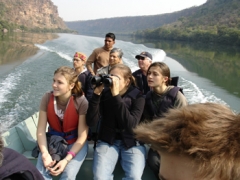
The Chambal Safari boatmen are exceptionally skilled at cutting the boat engines, and maneuvering as close to the birds and animals as possible without disturbing them. Trained naturalists accompany visitors and provide expert information on the Chambal wildlife. The River Safari is a most relaxing, enjoyable and special experience.
Afternoon enjoy the trip to Bateshwar Temples.
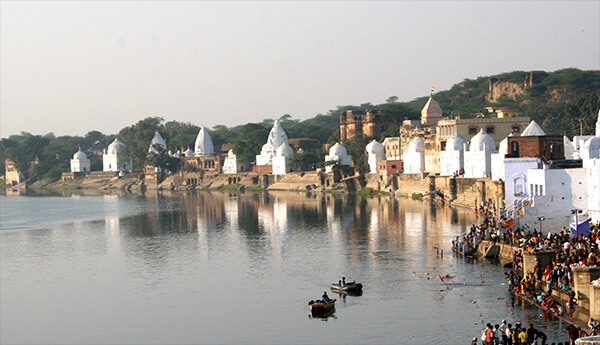 The ancient temple complex at Bateshwar on the river Yamuna, 10 km from the Chambal Safari Lodge, consists of more than a hundred temples dedicated to the Hindu God Shiva. Referred to as Surajpur in ancient texts, Bateshwar derives its current name from its reigning deity Lord Bateshwar Mahadev (another name for Shiva).
The ancient temple complex at Bateshwar on the river Yamuna, 10 km from the Chambal Safari Lodge, consists of more than a hundred temples dedicated to the Hindu God Shiva. Referred to as Surajpur in ancient texts, Bateshwar derives its current name from its reigning deity Lord Bateshwar Mahadev (another name for Shiva).
Day 10: Chambal / Agra (70 Kms – 1 ½ Hrs drive)
After breakfast drive to Agra.
Agra stands on the right bank of the river Yamuna, was once the seat of the Mughal rulers, the zenith of art and an enshrined romance. A town famous for its beautiful medieval monuments. The passion of the Mughals for building endowed it with some of the loveliest buildings in the world.
Later visit Taj Mahal (Closed on Fridays) – A poignant poetry in marble, stands serene and
The most extravagant monument ever built for love is a tribute to the timelessness of art and love. The inimitable poem in white marble, one of the seven modern wonders of the world, the finest expression of love of Emperor Shah Jahan for his queen Mumtaz who died giving birth to their 14th child, is located on the banks of the Yamuna river here. The construction of the Taj had commenced in 1631AD and had ended in 1653AD. Workers were gathered from all over the country and from central Asia. About 20,000 people were recruited to translate this dream into reality. The main architect was Isa Khan who was brought from Iran.
Later visit Agra Fort, -Built by the great Emperor Akbar in 1565 AD, the fort is a masterpiece of design and construction. Within the fort are a number of exquisite buildings, including the Moti Masjid, Diwane-I-Am, Diwane-I-Khas and Musamman Burj, where the Emperor Shah Jahan died in imprisonment, besides Jahangir’s Palace, Khaas Mahal and the Sheesh Mahal.
Also enjoy the Magic Show in Agra.
Overnight in the hotel
Day 11: Agra – Delhi (203 Kms – 5 Hrs drive)
After leisurely breakfast drive to Delhi, on the way visit Sikandra.
Sikandra: The mausoleum of the great Mughal King Akbar (1556-1605). Akbar began building it during his lifetime and his son, the Mughal Emperor Jahangir, completed it. It has a large arched entrance and green lawns, on which deer can be seen grazing, surround the tomb
Arrive Delhi and check in at the Hotel.
Overnight in the Hotel
Day 12: Delhi Departure
In time transfer to the airport to board the flight back home.
End of Tour
FAQs about the Tour
q: What is the highlight of Delhi’s attractions?
a: Delhi’s attractions encompass a blend of historical and modern landmarks, including the iconic Red Fort, Jama Masjid, India Gate, and the President’s House.
q: What is Jaipur famous for?
a: Jaipur, known as the Pink City, is renowned for its grandeur and cultural heritage, with attractions like the majestic Amber Fort, Hawa Mahal, and City Palace.
q: What makes Ranthambore National Park special?
a: Ranthambore National Park is famous for its Bengal tiger population and diverse wildlife, set in a dry deciduous forest with lakes and the historic Ranthambore Fort.
q: What can be experienced at Bharatpur Bird Sanctuary?
a: Bharatpur Bird Sanctuary offers an exceptional birdwatching experience with over 360 bird species, including migratory birds from Siberia, amidst lakes and lush surroundings.
q: What’s unique about Chambal?
a: Chambal River offers river safaris showcasing diverse wildlife such as crocodiles and gharials, while the Bateshwar Temples offer insights into ancient architecture and culture.
q: What are the main attractions of Agra?
a: Agra is renowned for the magnificent Taj Mahal, the Agra Fort, and the serene Sikandra tomb of Emperor Akbar, all showcasing exquisite Mughal architecture.
q: What is the significance of the Bateshwar Temples?
a: The Bateshwar Temples complex is dedicated to Lord Shiva and showcases intricate architecture, providing a cultural glimpse into India’s historical past.
q: How can one explore the Chambal River’s wildlife?
a: The Chambal Safari offers a unique river safari experience with skilled boatmen, providing close encounters with wildlife like crocodiles and various bird species.
q: What is the appeal of the Amber Fort in Jaipur?
a: The Amber Fort is perched atop a hill and narrates tales of Rajput valor through its architecture, history, and panoramic views of the surrounding landscape.
q: What’s special about the Keoladeo Ghana National Park?
a: Keoladeo Ghana National Park, also known as Bharatpur Bird Sanctuary, is a UNESCO World Heritage Site known for hosting over 360 bird species, including rare migratory birds, amidst scenic lakes and marshland.
Get a Quote: Call/Whatsapp: +91 9810954649 or Fill Contact Form


